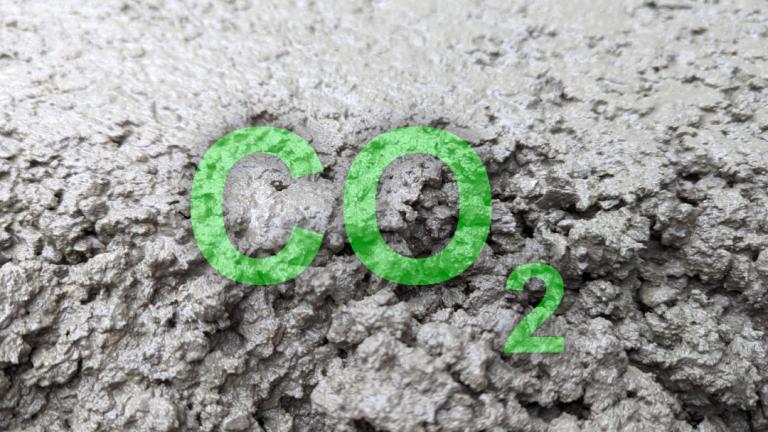
Despite the many advantages of concrete as a modern construction material, including its high strength, low cost, and ease of manufacture, its production currently accounts for approximately 8 percent of global carbon dioxide emissions.
Recent discoveries by a team at MIT have revealed that introducing new materials into existing concrete manufacturing processes could significantly reduce this carbon footprint, without altering concrete’s bulk mechanical properties.
The findings are published today in the journal PNAS Nexus, in a paper by MIT professors of civil and environmental engineering Admir Masic and Franz-Josef Ulm, MIT postdoc Damian Stefaniuk and doctoral student Marcin Hajduczek, and James Weaver from Harvard University’s Wyss Institute.
After water, concrete is the world’s second most consumed material, and represents the cornerstone of modern infrastructure. During its manufacturing, however, large quantities of carbon dioxide are released, both as a chemical byproduct of cement production and in the energy required to fuel these reactions.
Approximately half of the emissions associated with concrete production come from the burning of fossil fuels such as oil and natural gas, which are used to heat up a mix of limestone and clay that ultimately becomes the familiar gray powder known as ordinary Portland cement (OPC). While the energy required for this heating process could eventually be substituted with electricity generated from renewable solar or wind sources, the other half of the emissions is inherent in the material itself: As the mineral mix is heated to temperatures above 1,400 degrees Celsius (2,552 degrees Fahrenheit), it undergoes a chemical transformation from calcium carbonate and clay to a mixture of clinker (consisting primarily of calcium silicates) and carbon dioxide — with the latter escaping into the air.
When OPC is mixed with water, sand, and gravel material during the production of concrete, it becomes highly alkaline, creating a seemingly ideal environment for the sequestration and long-term storage of carbon dioxide in the form of carbonate materials (a process known as carbonation). Despite this potential of concrete to naturally absorb carbon dioxide from the atmosphere, when these reactions normally occur, mainly within cured concrete, they can both weaken the material and lower the internal alkalinity, which accelerates the corrosion of the reinforcing rebar. These processes ultimately destroy the load-bearing capacity of the building and negatively impact its long-term mechanical performance. As such, these slow late-stage carbonation reactions, which can occur over timescales of decades, have long been recognized as undesirable pathways that accelerate concrete deterioration.
“The problem with these postcuring carbonation reactions,” Masic says, “is that you disrupt the structure and chemistry of the cementing matrix that is very effective in preventing steel corrosion, which leads to degradation.”
In contrast, the new carbon dioxide sequestration pathways discovered by the authors rely on the very early formation of carbonates during concrete mixing and pouring, before the material sets, which might largely eliminate the detrimental effects of carbon dioxide uptake after the material cures.
The key to the new process is the addition of one simple, inexpensive ingredient: sodium bicarbonate, otherwise known as baking soda. In lab tests using sodium bicarbonate substitution, the team demonstrated that up to 15 percent of the total amount of carbon dioxide associated with cement production could be mineralized during these early stages — enough to potentially make a significant dent in the material’s global carbon footprint.
"It's all very exciting," Masic says, "because our research advances the concept of multifunctional concrete by incorporating the added benefits of carbon dioxide mineralization during production and casting.”
Furthermore, the resulting concrete sets much more quickly via the formation of a previously undescribed composite phase, without impacting its mechanical performance. This process thus allows the construction industry to be more productive: Form works can be removed earlier, reducing the time required to complete a bridge or building.
The composite, a mix of calcium carbonate and calcium silicon hydrate, “is an entirely new material,” Masic says. “Furthermore, through its formation, we can double the mechanical performance of the early-stage concrete.” However, he adds, this research is still an ongoing effort. “While it is currently unclear how the formation of these new phases will impact the long-term performance of concrete, these new discoveries suggest an optimistic future for the development of carbon neutral construction materials.”
While the idea of early-stage concrete carbonation is not new, and there are several existing companies that are currently exploring this approach to facilitate carbon dioxide uptake after concrete is cast into its desired shape, the current discoveries by the MIT team highlight the fact that the precuring capacity of concrete to sequester carbon dioxide has been largely underestimated and underutilized.
“Our new discovery could further be combined with other recent innovations in the development of lower carbon footprint concrete admixtures to provide much greener, and even carbon-negative construction materials for the built environment, turning concrete from being a problem to a part of a solution,” Masic says.
The research was supported by the Concrete Sustainability Hub at MIT, which has sponsorship from the Portland Cement Association and the Concrete Research and Education Foundation.






